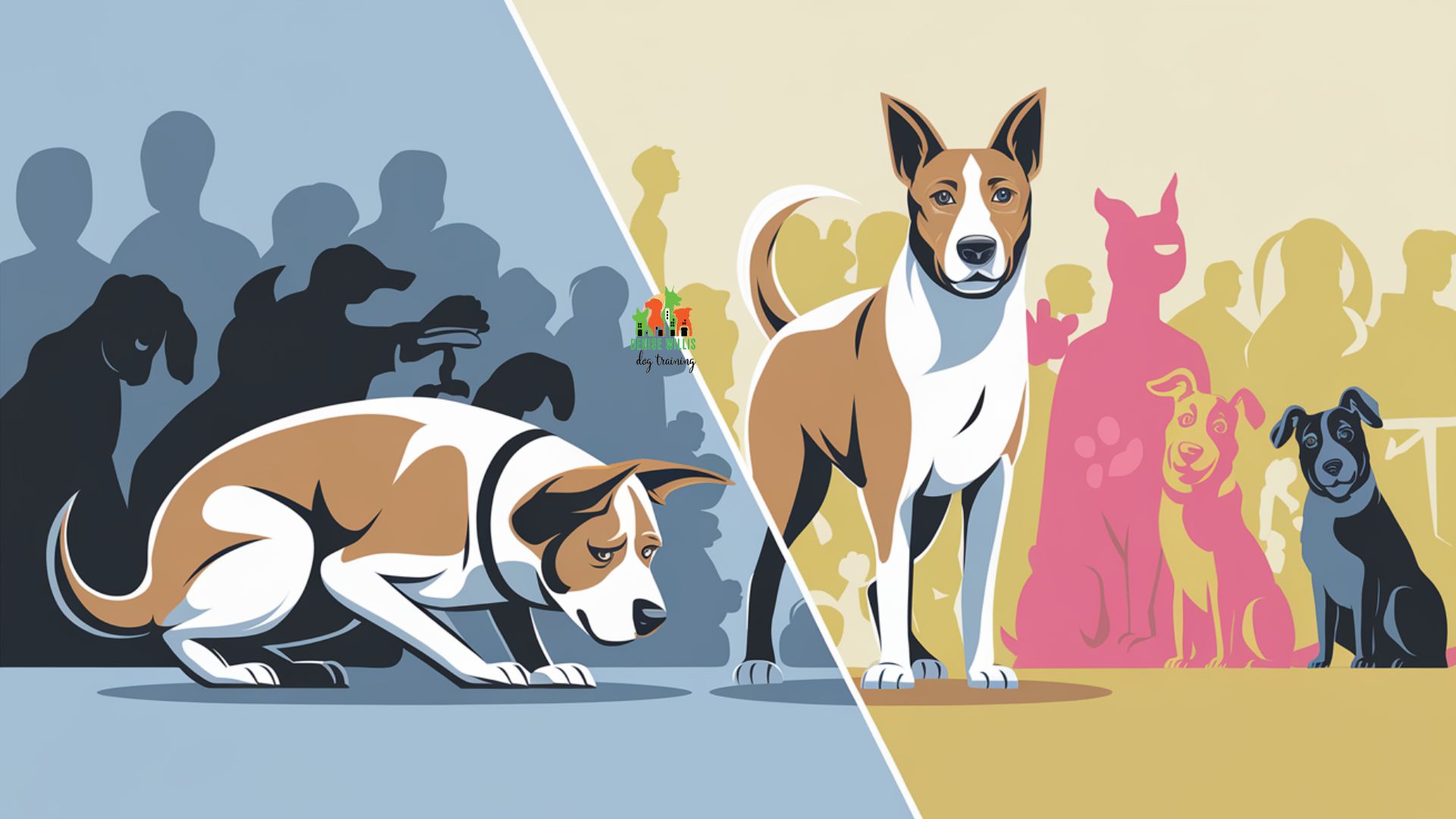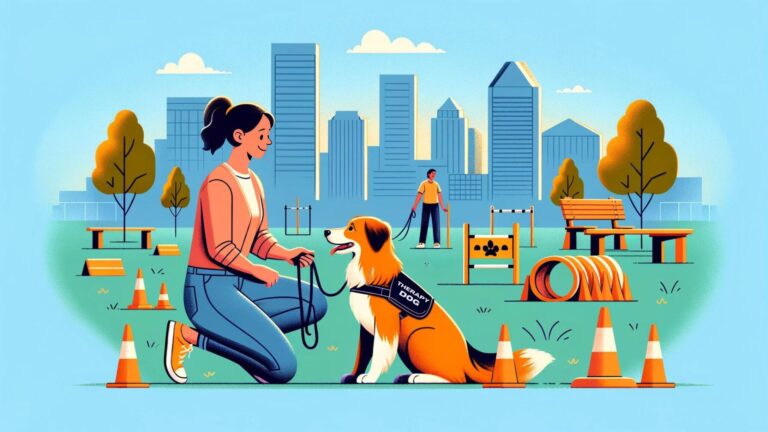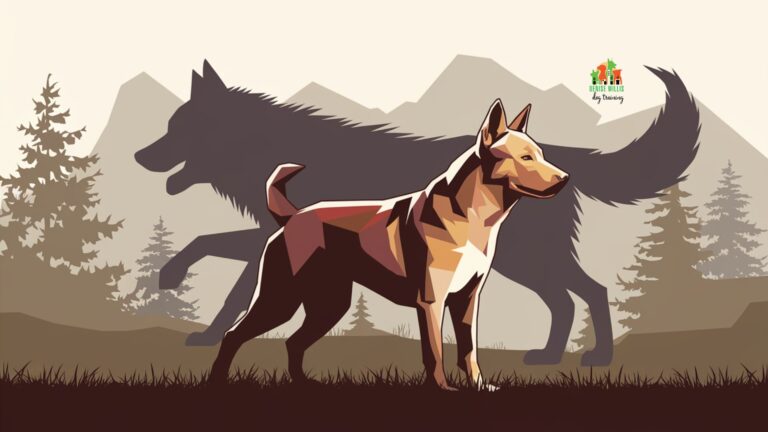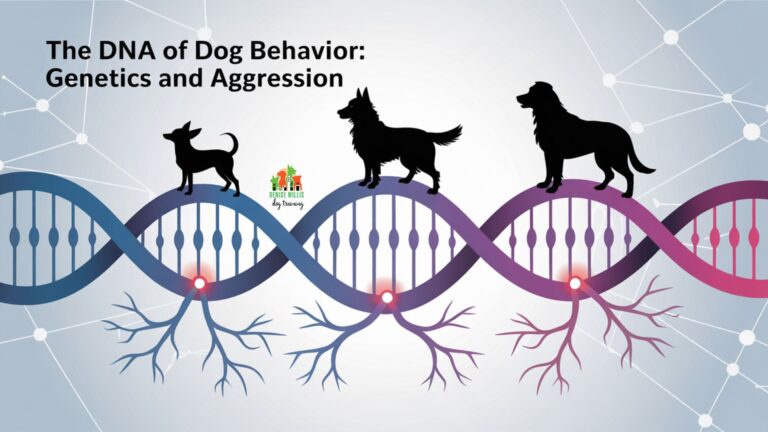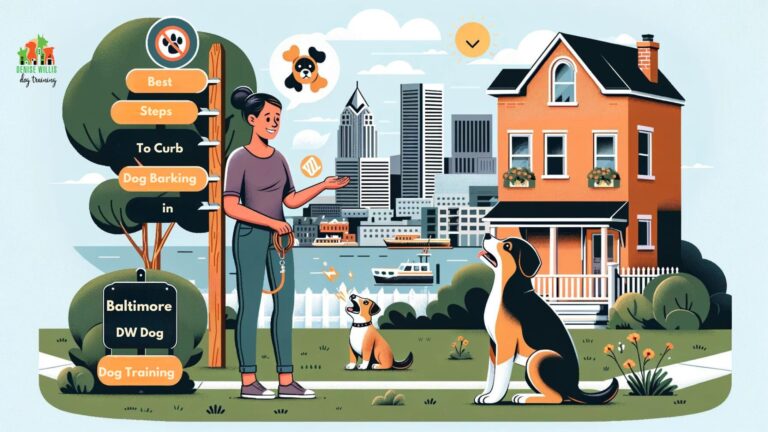Socializing the Unsociable: Overcoming Dog Aggression Through Positive Experiences
📍 Service Area Notice: DW Dog Training provides in-person training services exclusively in the Greater Baltimore area. While our blog content is designed to help dog owners internationally, our hands-on training services are locally focused. For readers outside our service area, we hope you find value in our articles and welcome you to reach out with questions!
Imagine you’re walking your dog down a peaceful street when suddenly, another dog appears. Your heart races as your usually sweet pup transforms into something that sounds more like a furry chainsaw than your beloved companion.
If this scenario hits close to home, you’re not alone.
Dog aggression isn’t just about “bad dogs” or “failed training”. It’s a complex behavioral puzzle that deserves our understanding and patience.
Let’s face it.
Aggressive behavior in dogs can feel like navigating a minefield while wearing a blindfold. As research from Pawious experts shows, what we often label as aggression is actually fear, anxiety, or simple miscommunication.
The good news?
With the right approach and understanding, these behaviors can be reshaped into more positive responses.
Having worked with countless dogs who’ve struggled with aggressive tendencies, I’ve learned that each case tells its own unique story. Some dogs missed crucial socialization windows, while others picked up defensive behaviors through challenging experiences. But here’s the silver lining – studies from the National Library of Medicine confirm that proper socialization techniques can dramatically improve even seemingly aggressive behaviors.
Key Takeaways
Before we fetch deeper into the details, let’s bone up on some essential points that every dog parent should know about aggression and socialization. Think of these as your pocket guide to understanding your four-legged friend’s behavior better.
- Early intervention is your best friend: Research consistently shows that the prime socialization window occurs between 3-12 weeks. Miss this window? Don’t worry. We’ve got strategies for that too.
- Positive reinforcement isn’t just feel-good fluff: Dogs trained through rewards show significantly fewer behavioral problems than those trained with punishment. Who knew treating your dog like a friend instead of a furry prisoner could work so well?
- Size doesn’t determine success: According to nature research, smaller dogs actually tend to show more aggressive behaviors than their larger counterparts. Napoleon complex, anyone?
- Fear isn’t forever: With proper training and patience, even the most anxious or aggressive dogs can learn new, positive ways of interacting with the world.
Understanding Dog Aggression
When it comes to canine aggression, we’re often quick to slap labels on behaviors without understanding the complex tapestry of factors at play. Like that friend who gets cranky when they’re hungry (we all have one), dogs have their reasons for displaying aggressive behavior.
Sometimes it’s fear, other times it’s frustration, and occasionally it’s just a massive miscommunication between species.
The Science Behind Aggressive Behavior
Anyone who’s ever watched their sweet pup turn into a growling guardian at the sight of the mail carrier knows that dog behavior can seem unpredictable. However, research from veterinary experts shows that aggression follows distinct patterns and has clear triggers.
Think of your dog’s brain like a sophisticated alarm system. Sometimes it’s properly calibrated, alerting to genuine threats. Other times, it’s like that oversensitive smoke detector that goes off when you’re just trying to make toast. Understanding these neural pathways helps us reprogram the response.
Several factors influence aggressive tendencies in our furry friends:
- Genetic predisposition: Some breeds naturally have stronger protective instincts
- Early life experiences: The quality of socialization during puppyhood
- Current environment: Daily stressors and triggers
- Health status: Physical discomfort can lead to defensive behaviors
Common Triggers and Warning Signs
Just as you might get testy when someone invades your personal space bubble at the grocery store, dogs have their own boundaries and comfort zones. According to family pet clinic research, recognizing early warning signs can prevent aggressive incidents before they occur.
Warning signs often progress in a predictable sequence:
- Stiffening body posture (the canine equivalent of “excuse me?”)
- Whale eye (showing whites of eyes – think side-eye but more serious)
- Lip licking and yawning (the dog version of nervous fidgeting)
- Growling (the verbal warning system)
- Snapping or biting (the last resort)
Myth vs Reality
Pop culture has given us plenty of misconceptions about dog aggression. Time to separate fact from fiction with some tail-wagging truth bombs.
Common myths that need debunking:
- “He just snapped out of nowhere!” (Spoiler: Dogs always give warnings)
- “Aggressive dogs can’t be rehabilitated” (Tell that to our success stories)
- “It’s all in how you raise them” (Biology and environment both play roles)
Research from whole dog journal shows that most aggressive behaviors stem from fear or anxiety rather than dominance. It’s less about your dog plotting world domination and more about them feeling unsafe or uncertain.
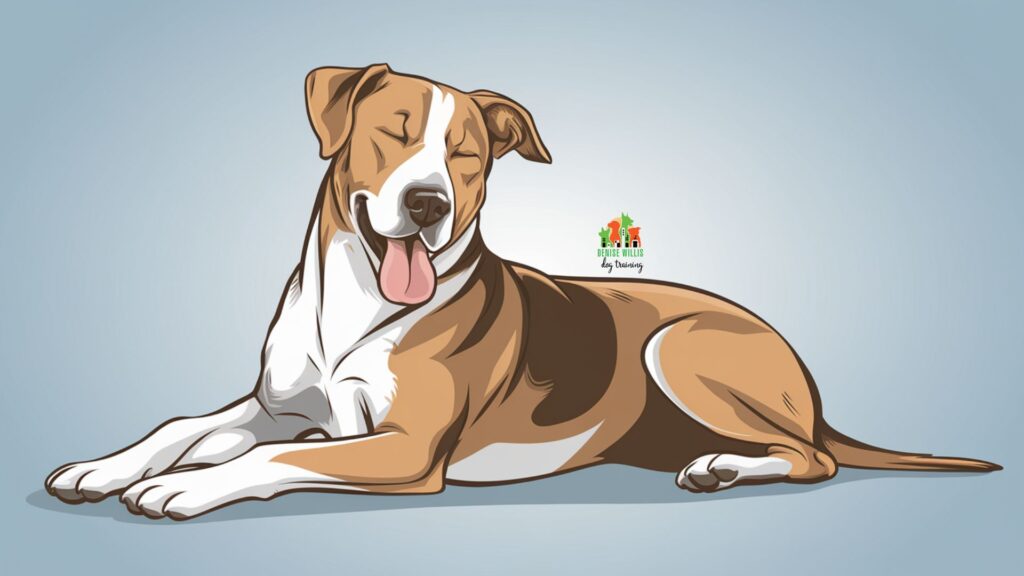
The Numbers Behind the Barks: Understanding Dog Behavior in Data
Ever wonder just how many other dog parents are out there wrestling with the same challenges you are?
While your furry friend might seem like the only canine comedian turning your daily walk into an impromptu circus act, the numbers tell a different story. Let’s dive into some eye-opening statistics that might make you feel less alone in your training adventures.
Think of these statistics like your dog’s social media profile, but instead of “likes” and “shares,” we’re looking at real data that shapes our understanding of canine behavior. From bite incidents that make headlines to the surprising number of pups missing out on their crucial socialization “puppy parties,” these numbers paint a picture of why proper training isn’t just a nice-to-have – it’s a must-have.
| Category | Statistic | Details | Source |
|---|---|---|---|
| Annual Dog Bites | 4.5 million | Reported dog bites in the United States annually | [JacksonBackHome] |
| Daily Emergency Care | 1,000 | People requiring emergency care for serious dog bite injuries daily | [JacksonBackHome] |
| Puppy Socialization | 33% | Pet owners providing minimal socialization opportunities | [UoGuelph] |
| Puppy Classes | 51% | Pet owners who didn’t attend puppy training classes | [UoGuelph] |
| Fear Impact | 5x | Higher odds of aggressive behavior in fearful dogs compared to non-fearful dogs | [Nature] |
Well, those numbers certainly give us something to chew on, don’t they?
Just like how your dog can’t resist investigating every interesting smell on your walk, these statistics reveal some fascinating patterns about our furry friends’ behavior.
Notice how many pups are missing out on early socialization opportunities? That’s like skipping kindergarten and heading straight to college. No wonder some dogs find social situations challenging!
The Socialization Window
Think of puppy socialization like learning a language. There’s a golden window of opportunity when everything just clicks better. Just as humans absorb languages effortlessly in childhood but struggle with Duolingo as adults, dogs have their prime time for social learning.
Studies have demonstrated that proper socialization during the critical period (3-12 weeks) can prevent a multitude of behavioral issues down the road. It’s like giving your pup a social cheat sheet for life.
Critical Development Periods
The journey from wiggly puppy to well-adjusted adult dog involves several crucial developmental stages. Like chapters in a book, each period builds upon the last to create the complete story of your dog’s behavioral repertoire.
Professional trainers note that these developmental periods include:
- Neonatal period (0-2 weeks): The eat-sleep-repeat phase
- Transitional period (2-3 weeks): First steps into awareness
- Primary socialization (3-6 weeks): The foundation of dog-dog interaction
- Secondary socialization (6-12 weeks): The world-exploration phase
- Juvenile period (12 weeks-6 months): The teenage testing boundaries phase
Impact of Missing Early Socialization
Remember those awkward middle school years when you didn’t quite know how to interact with other humans?
Dogs who miss their critical socialization window often feel that way their entire lives. Recent research shows that dogs from environments with limited early socialization, like commercial breeding facilities, often struggle with behavioral issues that make teen awkwardness look like a walk in the park.
The COVID-19 pandemic threw us a curveball in puppy socialization. Those adorable “pandemic puppies” who spent their formative weeks in lockdown are teaching us valuable lessons about adaptation and recovery. Think of them as the work-from-home generation of the dog world. they’ve got some unique challenges, but they’re also surprisingly resilient.
Missing early socialization can manifest in various ways:
- Fear of unfamiliar objects (that innocent garden gnome becomes a terrifying monster)
- Anxiety around new people (delivery drivers are clearly dog-eating aliens)
- Overreaction to normal sounds (because clearly, the vacuum cleaner is plotting world domination)
- Difficulty reading other dogs’ social cues (basically, your dog became that person who laughs at jokes at the wrong time)
Recovery Strategies for Adult Dogs
Just because your dog missed the early socialization boat doesn’t mean they’re doomed to a life of social awkwardness. As demonstrated by success stories, even adult dogs can learn new social tricks.
Take Max, for example, a two-year-old Labrador who suffered from severe separation anxiety. Through patient training and positive reinforcement, Max transformed from a furniture-destroying stress case into a confident canine who could handle alone time like a champ. His success story reminds us that it’s never too late for positive change.
Here’s what works for adult dog socialization:
- Baby steps beat giant leaps: Start with controlled, low-stress exposures
- Distance is your friend: Let your dog observe new experiences from a comfortable space
- Reward the small wins: Did your dog look at another dog without having a meltdown? Party time!
- Professional guidance can fast-track progress: Sometimes you need a dog-behavior translator
A Visual Snapshot of Dog Behavior
Think of this as your cheat sheet for understanding what makes our furry friends tick (and occasionally tock out). While the numbers tell one story, sometimes a picture – or in this case, four of them – is worth a thousand barks. Let’s break down the key elements that shape our dogs’ behavioral world.
Understanding Dog Behavior: Key Facts
Early Socialization
33% of pet owners provide minimal socialization, impacting their dog’s future behavior and confidence.
Training Impact
51% of owners skip puppy classes, yet trained dogs show significantly fewer behavioral problems.
Critical Window
The 3-12 week period is crucial for puppy socialization, shaping lifelong behavior patterns.
Fear Factor
Fearful dogs have 5x higher odds of showing aggressive behavior, highlighting the importance of confidence building.
Pretty eye-opening, isn’t it?
These highlights give us a clear picture of just how important early experiences and proper training are in shaping our dogs’ futures. Like building a house, we need a solid foundation and that foundation starts with understanding these core concepts.
Building Positive Experiences
The journey from reactive to responsive isn’t about forcing your dog into uncomfortable situations. It’s about creating a highlight reel of positive experiences that gradually reshape their worldview. Think of it as giving your dog a social media feed filled with only good news.
The Power of Controlled Exposure
Creating positive associations is like being your dog’s personal event planner. You want every social gathering to be a hit. Research from Alpha Paws shows that controlled exposure techniques can dramatically improve even severe cases of aggression.
Take Bella’s story, a rescue German Shepherd who initially showed aggressive tendencies toward other dogs and strangers. Through carefully planned exposure sessions and positive reinforcement, she went from social outcast to social butterfly.
The key?
Making every new experience feel like finding an unexpected treat in your pocket.
Successful exposure strategies include:
- Setting up “chance” encounters with friendly dogs at safe distances
- Creating positive associations with previously triggering situations
- Using high-value rewards (because sometimes regular treats just don’t cut it – bring out the good stuff!)
- Gradually decreasing distance while maintaining comfort
Reading Your Dog’s Body Language
Understanding your dog’s communication style is like learning a new language where tail positions are verbs and ear movements are adjectives. Professional trainers emphasize that reading these subtle cues prevents pushing your dog past their comfort zone.
Think of your dog’s stress signals as their personal emoji set:
- Lip licking = “This is awkward…”
- Whale eye (showing whites) = “I’m not sure about this…”
- Yawning = “Can we take a break?”
- Tail tucked = “This is seriously stressing me out!”
- Play bow = “Let’s be friends!”
Creating Safe Learning Environments
Creating the perfect learning environment for your dog is like setting up the world’s most thoughtful dinner party. Everything needs to be just right for your guest to feel comfortable. Behavior specialists at Got K9 note that environment plays a crucial role in successful socialization.
Just as you wouldn’t throw an introvert into a mosh pit and expect them to have fun, you can’t expect your nervous dog to thrive in overwhelming situations. The key is creating what I like to call “friendship zones” – spaces where your dog can explore social interactions without feeling like they’re auditioning for a role they didn’t want.
Essential elements of a safe learning space include:
- Buffer zones (because personal space bubbles are real, even for dogs)
- Escape routes (nobody likes feeling cornered at a party)
- Familiar comfort items (think of them as your dog’s emotional support blanket)
- Controlled distractions (like background music at a dinner party – present but not overwhelming)
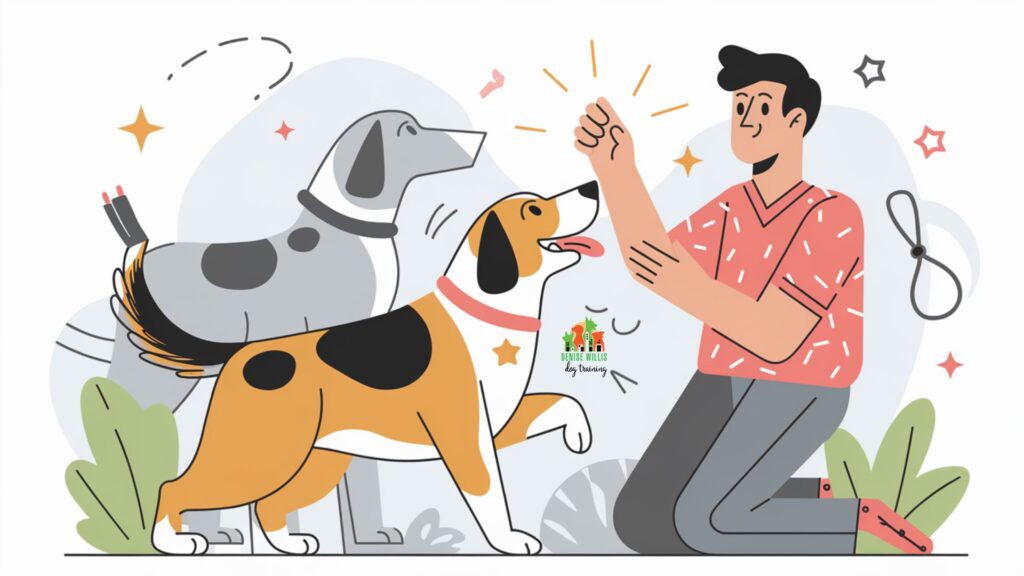
Professional Training Approaches
Let’s be honest.
Sometimes our DIY efforts at dog training look more like interpretive dance than professional guidance. That’s when bringing in the experts can turn chaos into choreography. Professional training isn’t admitting defeat; it’s like hiring a personal trainer for your dog’s behavioral fitness.
Positive Reinforcement Techniques
Remember when your parents tried to bribe you with dessert to eat your vegetables?
Turns out, they were onto something. Research from veterinary experts confirms that positive reinforcement isn’t just feel-good fluff. It’s science-backed behavior modification that actually works.
Take Bear’s story, our resident reactive superstar. Through cafe training and the Look At That (LAT) method, Bear went from barking at every passing shadow to becoming the neighborhood’s most improved canine citizen.
The secret sauce?
Timing treats perfectly with good behavior, like a culinary choreographer of canine success.
Effective positive reinforcement strategies include:
- Marker training (think of it as taking a behavioral snapshot of the moment you want to repeat)
- Progressive exposure (like leveling up in a video game, but with real-life rewards)
- Differential reinforcement (rewarding the good stuff while the unwanted behaviors fade away)
- Environmental enrichment (because sometimes the best training happens during playtime)
Managing Environmental Factors
If dog training were a movie, environmental management would be the unsung hero working behind the scenes. Expert trainers emphasize that success often depends more on setting up the right situation than on the training itself.
Think about it like this.
You wouldn’t try to learn calculus in a nightclub, right?
Your dog needs the right environment to learn new social skills. Sometimes that means turning your living room into a canine classroom or your backyard into a controlled social experiment.
Key environmental factors to consider:
- Time of day (because nobody learns well during their usual nap time)
- Weather conditions (rain might dampen more than just fur)
- Background activity levels (too much action can turn training into chaos)
- Available space (cramped quarters rarely spark joy or learning)
Building Owner Confidence
Here’s a plot twist for you. Sometimes the one who needs the most training isn’t the dog at all. Studies show that owner confidence plays a huge role in successful dog training. It’s like being the captain of a ship. If you’re nervous, the crew (your dog) picks up on it.
Remember Duke’s transformation?
His success wasn’t just about learning commands; it was about his owner becoming the confident leader Duke needed. Through dedicated training sessions and consistent practice, both Duke and his human learned to trust each other and the process.
Success Stories and Case Studies
Every dog trainer has a mental photo album of their most memorable transformations – those moments when you witness a dog flip the script on their own story. These aren’t just feel-good tales; they’re proof that with the right approach, patience, and a dash of determination, even the most challenging behaviors can change.
From Chaos to Calm: Max’s Journey
Imagine being so stressed about being alone that you turn your house into an impromptu renovation project. That was Max’s reality. This two-year-old Labrador Retriever had a PhD in destruction whenever his family stepped out. According to training specialists, separation anxiety like Max’s often stems from deep-rooted insecurity rather than simple boredom.
Max’s transformation didn’t happen overnight – it was more like watching a master chef perfect a recipe. The ingredients? A mix of:
- Desensitization exercises (teaching him that goodbye doesn’t mean forever)
- Creating a cozy safe space (his personal zen den)
- Mental enrichment games (because a busy mind can’t throw a panic party)
- Gradual alone-time training (like learning to swim, starting in the shallow end)
The result?
Max went from demolition expert to meditation guru, handling four-hour solo sessions with the calm of a Buddhist monk. His family could finally leave the house without requiring their insurance agent on speed dial.
Bella’s Social Breakthrough
Speaking of transformations, let’s talk about Bella, our German Shepherd with a complicated relationship with, well, everything that moved. Training experts found that her aggression masked a deeper story of uncertainty and fear.
Through a year-long journey of positive reinforcement and controlled socialization, Bella’s tale evolved from “danger zone” to “social butterfly.” Key elements of her success included:
- Strategic exposure to other dogs (starting with the canine equivalent of speed dating)
- Reward-based training (because good behavior deserves great treats)
- Trust-building exercises (turning strangers into friends, one careful interaction at a time)
- Consistent practice (like learning a new language, but with more tail wagging)
Today, Bella’s not just tolerating dog parks. She’s teaching rookie dogs the art of proper play etiquette. Talk about a career change!
The Bear Necessity: Reactive to Responsive
Bear’s story hits close to home for many dog parents dealing with reactivity. Training documentation shows that his journey from reactive rover to composed canine involved some creative solutions.
The breakthrough came through:
- Cafe training (turning public spaces into classrooms)
- LAT (Look At That) method refinement (teaching Bear that looking doesn’t mean losing control)
- BAT (Behavior Adjustment Training) implementation (like teaching a dog social etiquette in baby steps)
What makes Bear’s story special isn’t just the transformation. It’s how it demonstrates that reactivity isn’t a life sentence. It’s more like a rough draft that needs some creative editing.
Duke’s Day School Triumph
Remember that kid who needed a different learning environment to thrive?
Duke was the canine equivalent. Professional trainers noted that his transformation through Dog Day School proved that sometimes, the conventional approach needs a remix.
His success formula included:
- Three days weekly of structured learning (think puppy preschool meets charm school)
- Daily 30-minute owner integration sessions (because teamwork makes the dream work)
- Weekly specific challenge targeting (like a personal trainer for behavior)
The result?
Duke graduated from class clown to valedictorian, mastering impulse control and reliable command response. More importantly, he developed a partnership with his owner that would make relationship counselors jealous.
Lessons Learned: What Our Success Stories Teach Us
Just like how we learn more from our embarrassing karaoke moments than our perfect performances, these success stories offer golden nuggets of wisdom. Think of them as cliff notes from the University of Canine Transformation, minus the student debt.
Every training triumph has left us with valuable insights that might just save you from a few gray hairs on your own journey. Training documentation confirms these key takeaways aren’t just feel-good fluff – they’re battle-tested truths from the trenches of transformation.
Consider these gems from our four-legged graduates:
- Early socialization rocks, but it’s never too late to learn new tricks (like finally learning to use your smartphone’s features after years of just making calls)
- Positive reinforcement isn’t just treating your dog like a furry vending machine – it’s building a trust account for future behavioral withdrawals
- Family consistency matters more than perfect technique (because mixed messages are confusing in any language)
- Professional guidance can turn months of frustration into weeks of progress
Professional Tips From The Training Trenches
After years of turning canine chaos into calm, we’ve collected some pro tips that work better than a bacon-flavored peace treaty. These aren’t just random suggestions thrown at the wall to see what sticks – they’re proven techniques backed by behavioral experts.
Think of these as your cheat codes for the video game of dog training:
Start with The Basics:
- Gradual exposure isn’t just a fancy term for “going slow” – it’s like teaching someone to swim by starting in the kiddie pool, not by throwing them off a yacht
- Counter-conditioning sounds technical, but it’s really just helping your dog realize that scary things can lead to awesome things (like how we learned to love vegetables when they’re covered in cheese)
- Creating structure isn’t about turning your home into a military academy – it’s about giving your dog the security of knowing what comes next
Advanced Strategies That Actually Work:
- Body language reading isn’t optional.It’s like having subtitles for your dog’s emotional state
- Management tools (like muzzles) aren’t admitting defeat; they’re like training wheels for behavior modification
- Mental stimulation isn’t just about fancy puzzle toys – sometimes it’s as simple as turning mealtime into brain time
Product Recommendations
Just like a skilled dog trainer needs their trusty treat pouch, every pet parent tackling socialization challenges needs their own toolkit of tried-and-true products. We’ve fetched some of the most effective tools that can help transform your cautious canine into a more confident companion. Think of these as your behavioral training Swiss Army knife – minus the actual knives, because nobody needs those kinds of surprises at the dog park!
- HALTI Training Leash: Transform your outdoor adventures with this professional-grade training leash that gives your dog room to explore while keeping you in control. Like a dance partner for your dog, it allows you to smoothly transition between different lengths for varying training scenarios. The padded handle means no more rope burn when your pup spots that suspiciously still leaf that absolutely must be investigated immediately. Warning: May cause your dog to believe they’ve joined an exclusive long-leash society and start judging other dogs’ shorter leads.
- PetSafe SMART DOG Bluetooth Training Collar: This modern marvel combines positive reinforcement with gentle vibration cues to help redirect your dog’s attention. It’s like having a tiny behavioral coach perched on your dog’s shoulders, minus the awkward conversations. Features adjustable settings and a user-friendly app that lets you track progress and customize training plans. Warning: Your tech-savvy pup may attempt to order treats through your smartphone while you’re sleeping.
- Sniffiz Mental Enrichment Snuffle Mat: Give your anxious pup a positive outlet with this engaging foraging mat that turns mealtime into an adventure. Made with durable materials that can withstand enthusiastic sniffing sessions, it’s like a treasure hunt that always ends in treats. Perfect for building confidence and redirecting nervous energy into productive activity. Warning: May turn your dog into a professional food detective who starts investigating every wrinkle in your throw blankets.
- Outward Hound Nina Ottosson Dog Worker Puzzle: Challenge your dog’s mind with this intermediate-level puzzle toy that helps build confidence through problem-solving. It’s like sending your pup to graduate school, but with better snacks and no student loans. The adjustable difficulty levels keep your dog engaged while rewarding calm, focused behavior. Warning: Your dog may start expecting you to provide increasingly complex puzzles, potentially leading to them solving your crosswords.
- Pet Acoustics Pet Tunes Bluetooth Speaker: This ingenious device plays specially arranged music designed to calm anxious dogs. Think of it as a spotify playlist curated specifically for your four-legged friend’s emotional wellbeing. The portable design means you can create a calming atmosphere anywhere. Warning: Your dog may develop sophisticated musical tastes and start judging your playlist choices.
Further Reading
Ready to dig deeper into the world of dog socialization?
We’ve curated a collection of articles that will take your understanding from “I think my dog’s trying to tell me something” to “I speak fluent canine.” Just remember. Reading these won’t automatically make you a dog whisperer, but it might help you understand why your pup thinks the vacuum cleaner is plotting world domination.
- The Shy Dog’s Guide to Conquering Fear: 10 Simple Techniques: Discover how to help your timid terrier or cautious collie find their inner brave heart. This comprehensive guide walks you through proven strategies that turn scaredy dogs into confident canines. Spoiler alert: Treats may be involved. And no, your dog didn’t pay us to say that.
- Decoding Your Dog: 15 Body Language Signals You Need to Know: Finally, a translation guide for all those mysterious head tilts and tail positions! Learn to read your dog’s subtle signals before they resort to more dramatic forms of communication. Warning: May result in you unconsciously mimicking dog body language during important business meetings.
- How to Manage Your Dog’s Territorial Aggression: Transform your self-appointed property manager into a more accommodating host. This guide helps you understand why your dog thinks they’re the neighborhood watch captain and how to help them retire from the position gracefully.
- 10 Warning Signs Your Dog Might Bite and How to Prevent It: Essential reading for anyone who’s ever wondered if their dog’s smile shows a few too many teeth. Learn to spot subtle warning signs before they escalate, and discover how to turn potential conflicts into teaching moments.
- Socializing Your Fearful Dog: A complete roadmap for helping your nervous newcomer become a social butterfly. From baby steps to breakthrough moments, this guide covers everything you need to know about helping your dog make friends without freaking out. Includes bonus tips for convincing your dog that not every stranger is a potential dog treat thief.
Remember, every dog’s journey is unique, just like their favorite spot for hiding socks. These resources are here to guide you through the process of helping your four-legged friend become their best, most confident self!
Frequently Asked Questions About Dog Socialization
You’ve got questions; we’ve got answers that aren’t just copied from a fortune cookie. These are the real-deal responses to the head-scratchers that keep dog parents up at night (besides actual head scratches, of course).
Q: Can an aggressive dog ever become social?
A: According to success stories documented by professional trainers, absolutely! Just like how that one friend who swore they’d never dance ended up owning the dance floor at your wedding, dogs can make remarkable transformations. It takes time, patience, and the right approach, but the capacity for change is there.
Q: Is my dog too old for socialization training?
A: Research shows that while puppyhood is prime time for socialization, adult dogs can absolutely learn new social skills. Think of it like learning a new language – sure, it’s easier when you’re young, but determination and the right teaching method can work wonders at any age.
Q: How long does rehabilitation typically take?
A: Like asking how long it takes to become a good cook, it depends on the recipe (dog) and the chef (you). Some dogs might show improvement in weeks, while others might need months of consistent work. The key is celebrating progress, not perfection.
Test Your Knowledge: Dog Socialization & Behavior
Moving Forward Together: Your Journey Doesn't End Here
You've made it through the ultimate guide to turning your social outcast into a canine community leader - or at least a dog who doesn't think the mailman is plotting world domination. But like any good Netflix series, this story has more seasons ahead.
Remember when we started this journey?
Those moments of watching your dog transform into a furry tornado at the sight of another pup probably felt like being stuck in an endless loop of embarrassing social situations. But here's the thing - behavioral experts confirm that understanding and patience are your strongest allies in this transformation.
The Road Ahead
Think of dog socialization like tending a garden. You don't plant seeds one day and expect a full blooming garden the next morning (though wouldn't that be nice?). Your efforts today are creating roots for tomorrow's success. Every positive interaction, no matter how small, is like adding another flower to your behavioral bouquet.
The journey ahead might include:
- Celebrating tiny victories (your dog looked at another dog without having an existential crisis? That's champagne-worthy!)
- Building on successes (like leveling up in the game of social skills)
- Maintaining progress (because behavioral maintenance is like going to the gym - skip too many days and you're back to square one)
- Adapting to new challenges (because life loves throwing curveballs, usually when you least expect them)
Your Role in the Story
You're not just your dog's parent - you're their life coach, cheerleader, and translator in this human-dominated world. Training success stories show that owner involvement makes the difference between temporary changes and lasting transformation.
Think about Max, Bella, Bear, and Duke. their success stories weren't solo adventures. Behind each wagging tail and confident stride was a dedicated human who chose to be part of the solution. Their transformations remind us that with the right support, patience, and maybe a treat pouch that doesn't make you look like you're wearing a fanny pack from the 90s, remarkable changes are possible.
A Final Tail-Wagging Thought
Whether you're just starting this journey or you're halfway through your dog's social makeover, remember this: Every dog has their own pace, their own story, and their own path to success. Your job isn't to create the perfect dog. It's to help your furry friend feel secure and confident in their own fur.
And hey, if you're reading this while your dog is giving the side-eye to a perfectly innocent garden gnome, know that you're not alone. Research consistently shows that with positive reinforcement, professional guidance when needed, and a healthy dose of patience, even the most challenging behaviors can improve.
Let's Create Your Success Story
Every transformation starts with a single step, or in this case, a conversation about your dog's potential. Whether you're celebrating small victories or need a little extra support, we're here to help write your dog's next chapter.
Share your journey with us!
Drop us a line about your successes, challenges, or that one time your dog decided the vacuum cleaner wasn't Satan's chariot after all. Your experience helps build our community of devoted dog parents and might just inspire someone else's transformation story.
Ready to turn those challenging moments into tail-wagging triumphs? At DW Dog Training, we've seen countless dogs go from social butterflies-in-training to confident canine citizens. Our proven methods and personalized approach mean your dog isn't just another training project - they're our next success story waiting to happen.
Visit DW Dog Training or give us a call at +1 (443) 429-0445.
Located in Baltimore, MD, we're here to help you and your furry friend build the confident, joyful relationship you both deserve.
Because at DW Dog Training, we don't just train dogs. We transform relationships, one positive experience at a time. Let's write your dog's success story together!

